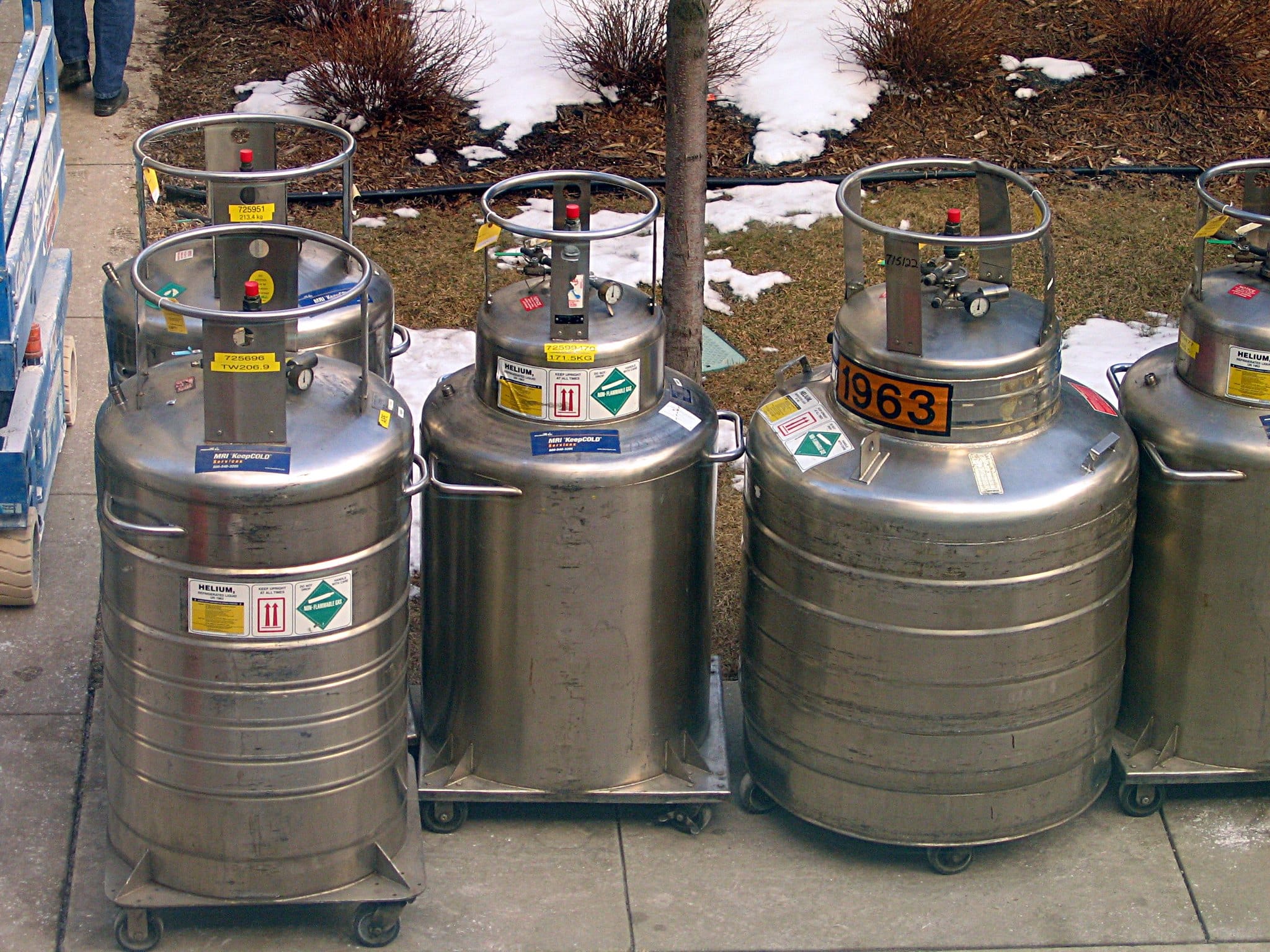
A Canadian company recently announced plans to explore underground deposits about 12 miles from the edge of the Boundary Waters Canoe Area Wilderness for the potential to extract helium. The site is near the same area as the Twin Metals copper-nickel mine proposal, but not affiliated — except in how it was discovered.
A subsidiary of what would become Twin Metals was drilling exploratory holes near Birch Lake in 2011 when it hit a deposit of helium about 1,800 feet below the surface.
“The gas pressure was sufficient to blow the core tube and associated drill fluid out of the hole and is therefore considered to be an over-pressured reservoir,” Pulsar Helium reports. “The borehole was allowed to flow with the expectation the pocket would be depleted in a matter of hours, however the gas flow persisted for four continuous days with no obvious drop in pressure. The gas flow velocity was measured using an anemometer designed for domestic wind speed, reaching its maximum speed recording of 150 km/hr prior to breaking under the gas pressure.”
With Twin Metals focused on copper and nickel, it chose not to pursue the deposit. In August of this year, Pulsar Helium went public on the Toronto Stock Exchange. It now fully controls the rights to the Birch Lake helium deposit, as well as an interest in a possible project in Greenland.
Exceeding expectations
Pulsar says the 2011 drilling turned up what could be a valuable resource. Gases collected from the drill hole had 10.5 percent helium content, a very high level of the valuable element. Some areas known for rich helium deposits in Texas, Oklahoma, and Kansas have helium levels topping out at 2.7 percent, according to the Bureau of Land Management.
This summer, Pulsar conducted passive testing designed to better assess the size of the deposit. The process indicated a potential deposit about 2,000 feet thick and up to seven square kilometers in area.
“The results of the passive seismic survey exceed our expectations. To see the velocity contrast at the depth where the discovery well intersected gas with 10.5% helium content is simply ideal,” said Pulsar president and CEO Thomas Abraham-James. “This suggests that we are looking at a reservoir with the potential for regional scale. The team and I are now focused on successfully executing the appraisal well drilling program.”

The next major step is drilling scheduled at the site for February 2024. The company has contracted for at least one dedicated drill hole, with the option to drill a second.
Drilling will go down to about 2,200 feet below the surface, near the original hole where helium was detected.
Helium is not just used for party balloons. The second most abundant element in the universe, it has unique properties that make it valuable for a variety of uses. In the medical field, it is used in MRI machines; in aeronautics it is used in rocket fuels; welders use it create an inert gas shield; it is also used to help cool nuclear reactors.
Considering options
If the helium deposit is verified as economically feasible and receives regulatory approval, extraction should be relatively simple and low impact. According to the company, five holes at most would be needed to remove the gas. Hydraulic fracturing, also known as fracking, is sometimes used to release helium from bedrock, and can cause environmental problems. But Pulsar’s CEO says no fracking would be required for this deposit.
There is no history of any type of gas extraction in Minnesota, so the state may need to set up new regulations to manage the industry.
“The DNR is considering options for creating a regulatory structure for nonpetroleum gas extraction, including helium and green fuels such as hydrogen,” the DNR said in a statement, according to the Duluth News Tribune. “Through this effort, our goal would be to ensure that proper protections are in place for natural resources and human health, and also ensure that a fair royalty structure benefitting Minnesota schools and communities is in place for any proposed extraction of these gases from state lands.”
To that end, the DNR said it is setting up meetings with Lake County officials and other state agencies to discuss regulatory responsibilities and needs.
More information:
- Pulsar Helium Inc.
- Company hopes to extract helium beneath Lake County in northeastern Minnesota – Duluth News Tribune
- About Helium – Bureau of Land Management

